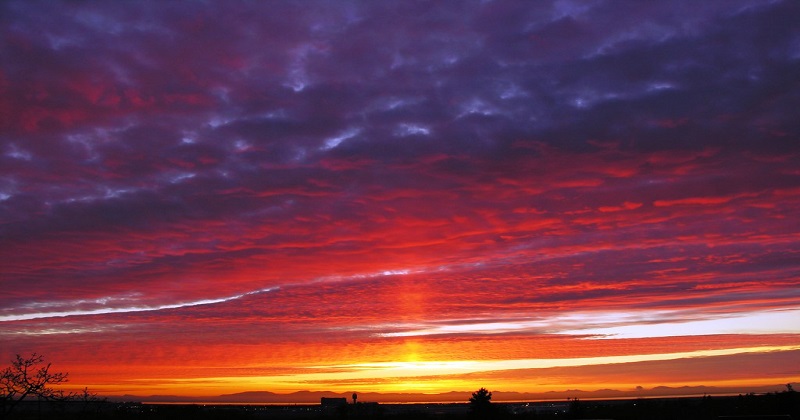
Aerosols sent up into the stratosphere during Tonga’s volcanic eruption in January may have caused unusually flaming and bright sunrises and sunsets over New Zealand and Australia in recent weeks. People have flooded New Zealand’s National Institute of Water and Atmospherics (Niwa) with questions about the ‘odd but lovely phenomena’. The team contacted colleagues in Otago and Paris to confirm their concerns — that the displays were caused by the Hunga Tonga-Hunga Ha’apai volcanic eruption.
The Lauder Atmospheric Research Station in Central Otago reported its detectors have identified unexpected surges in stratospheric aerosols 20-25 kilometres above New Zealand. Satellite data indicated that concentrations of stratospheric aerosols from the eruption had quadrupled between 35°S and 45°S – the latitude where New Zealand falls on the globe – since April, according to researchers at the Institut Pierre-Simon Laplace in Paris.
The aerosols from the cloud of gas and ash have been dispersed over the world, according to Niwa, and it is believed that they are responsible for the spectacular sky. Sunsets and sunrises would have been as spectacular in the aftermath of the eruption, but the aerosols were now moving south. ‘ When you watch a sunrise or sunset, the clouds usually transform into the most vivid colours. When stratospheric aerosols are present after a volcanic eruption, they scatter and bend light when the sun dips or rises over the horizon, generating a glow in the sky with blue, purple, and violet colours,’ said Nava Fedaeff, a Niwa forecaster.
The colour and intensity of volcanic twilights are depending on the quantity of haze and cloudiness along the route of light reaching the stratosphere, according to Fedaeff. ‘These enthralling views are enhanced by crepuscular light created by shadowing from distant clouds or mountain barriers. This occurrence has already occurred in New Zealand. Sunset afterglows remained for months after the 1991 eruption of the Philippine volcano Mount Pinatubo, suggesting that New Zealanders may be able to enjoy these wonderful morning and evening colours for a bit longer’, according to Fedaeff.

Post Your Comments